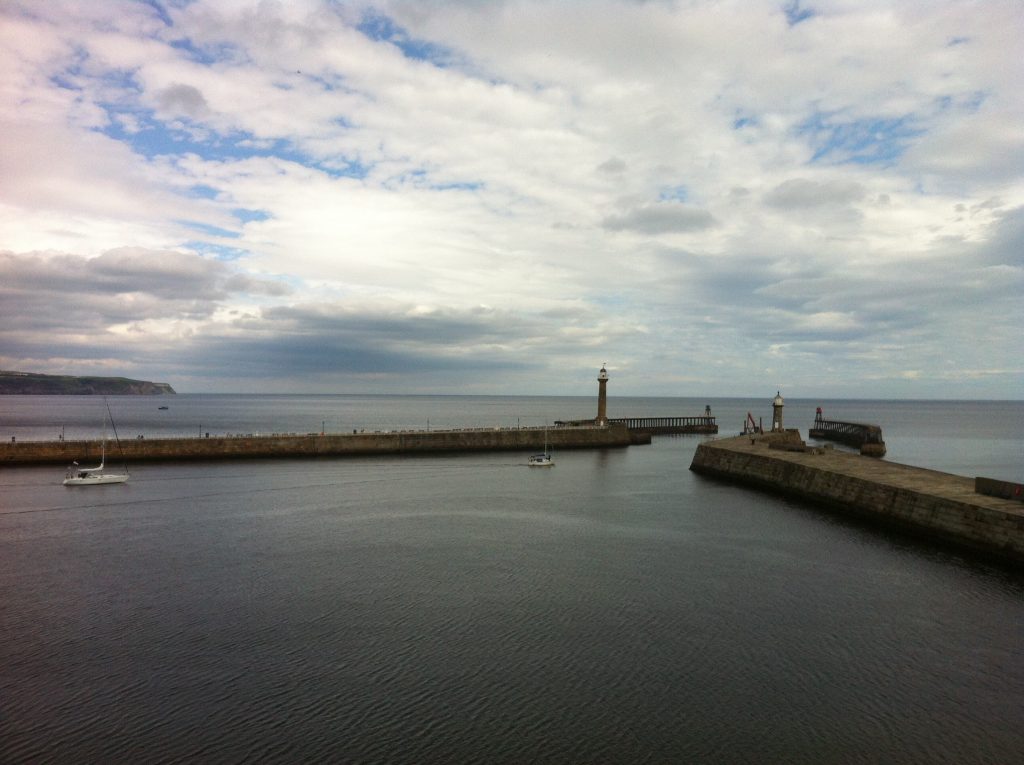
The Esk is the North Yorkshire river which flows into the sea at my home town of Whitby, that delightful – if perhaps at times overcrowded – holiday resort more famous these days for the goth festivals which take place there from time to time.
As a school boy I learnt that Whitby was the port from where Captain James Cook first sailed and then on locally built ships circumnavigated the globe discovering (for Europeans at any rate) Australia, New Zealand and the Hawaiian islands. It was also the centre of Britain’s whaling trade and at one time recorded as the sixth busiest port in the kingdom before the Victorian gentry turned it into a popular holiday town.
When I was younger the harbour was where I fished for tiddlers, locally called pennock, at Boots’ Corner and later, further inland, where I tried to catch brown trout, being unable to afford the much more expensive salmon fishing licence.
It was with some excitement then 50 years later I set out to walk to the source of the river high on the North Yorkshire moors and then follow it to the sea – passing through some of the most spectacular scenery the area has to offer.
The 37 mile route begins in the moorland village of Castleton and after a loop to visit the source of the river, The Esklets, returns to Castleton and follows the valley to the pretty villages of Danby, Lealholm, Glaisdale and Egton Bridge before skirting the North Yorkshire Moors Railway HQ in Grosmont and heading for Sleights, Ruswarp and then into Whitby. Full details of the route are on the North Yorkshire Moors National Park Website
With fellow walkers Jennifer, Michael and Daniel I booked into the Eskdale Hotel, in Castleton, for the night before the walk, a comfortable enough place though beware, they don’t serve meals on Sunday evenings. This lack meant we were lucky enough to eat instead at the Fox and Hounds Inn, at Ainthorpe.
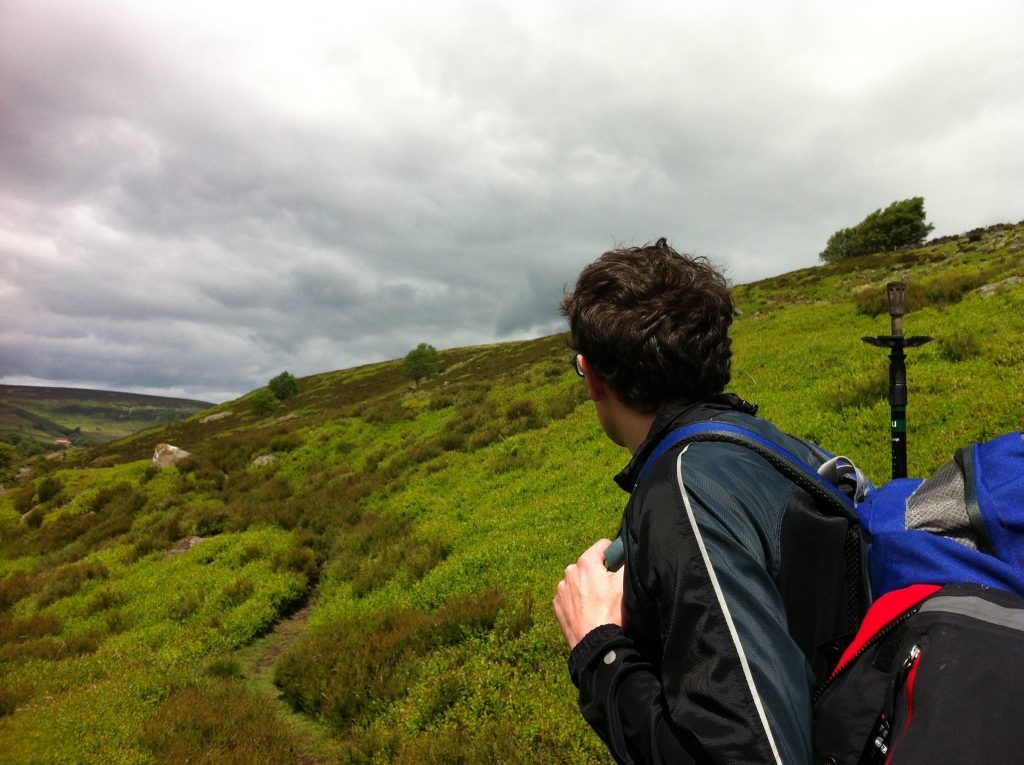
Day 1, Castleton to Blakey Ridge, about 9 miles: We began with a road section to Dibble Bridge before joining the footpath along the side of Westerdale and more road near Little Hograh Moor. Here we met two guys from York who told us they walked on the Yorkshire Moors every week and warned us of the risk of encountering adders. Although the June weather was fair it was, in our view too cold for snakes but apparently not. It seems this intrepid pair had been sitting on a wall enjoying a hot drink from their flask, when an adder – presumably looking for inner warmth too – curled itself around a mug of coffee they’d set on the wall to cool.
Continuing to follow the moor edge the route dipped into a boggy valley where numerous springs and streams – the Esklets – come together to make the beginnings of the Esk itself. A stiffish climb took us onto High Blakey Moor to join the old Rosedale Railway (part of the Coast to Coast route) and a sprint for a pint and hot shower at the Lion Inn, on Blakey Ridge, at 1325 feet, the highest pub on the North York Moors.
A word of warning here: our rooms at the Lion Inn were excellent, but if you eat dinner in the restaurant, think carefully before having a starter – the portion sizes are humungous. In fact we all agreed the plates were so full of food it was off-putting (clearly a third world problem). When we mentioned this to the staff their reply was that they got a lot of similar complaints and that a huge amount of food was wasted as a result.
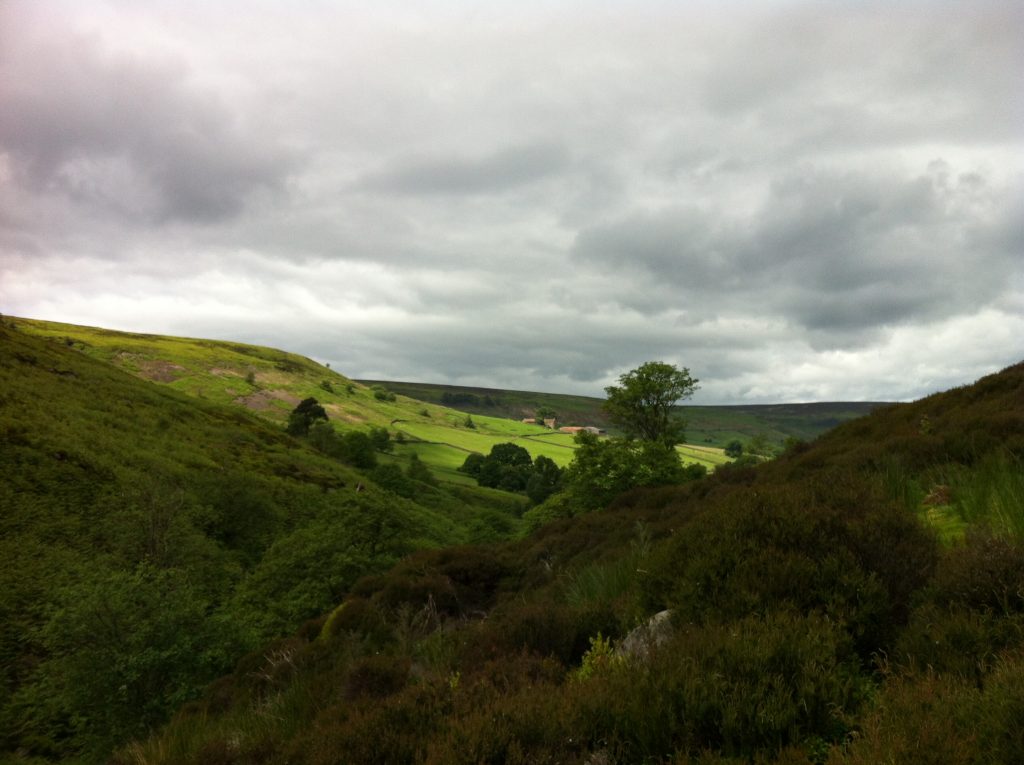
Day 2, Blakey Ridge to Lealholm, about 13 miles: A short road section took us across Rosedale Head and into Danby Dale, where we followed the contours into Castleton arriving in time for tea and sandwiches back at the Eskdale Inn, which redeemed itself for failing to provide us with dinner on Sunday.
We followed the river (and the Esk Valley Railway) to Danby and after passing the North York Moors Visitor Centre climbed the steep hill up Oakley Side to Danby Beacon a moorland high point, once the site of an RAF radar station closed in 1954 and demolished three years later.
From here, it was as they say, all downhill into Lealholm and the truly fabulous, and friendly, Board Inn, where the welcome and the food was exceptional.
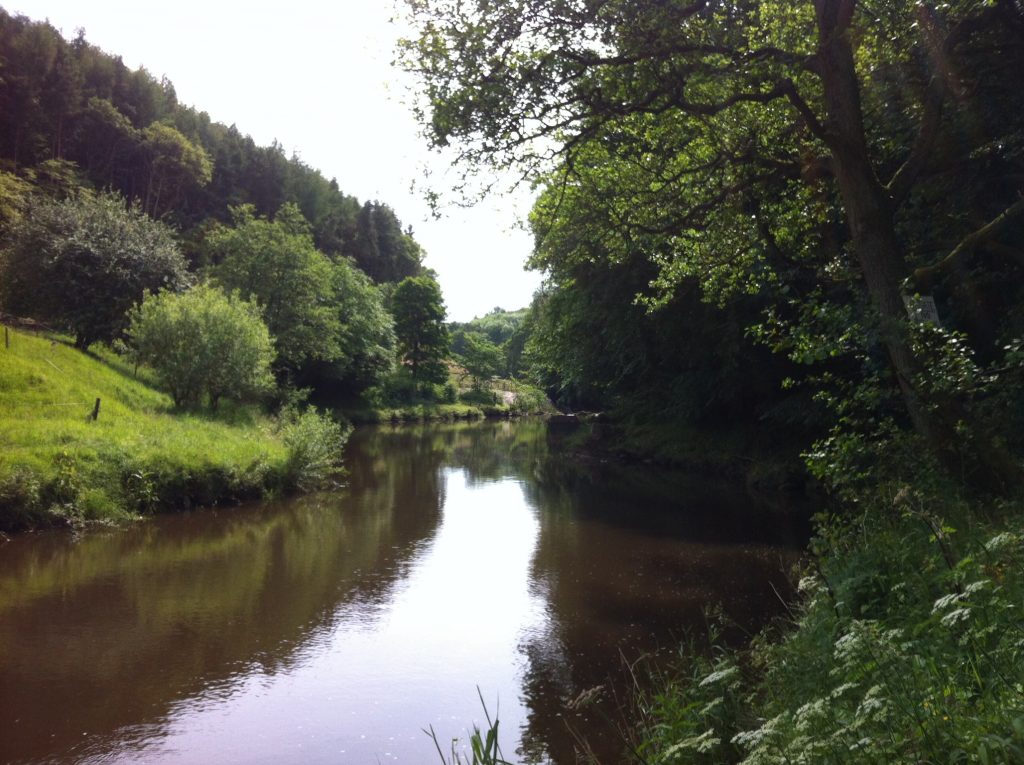
Day 3, Lealholm to Whitby, about 12 miles: Dan left the walk here having urgent business elsewhere, hopping on the train into Whitby while the three of us began what we all agreed was the toughest day of the walk – could it be that it was a hot day, or that we were tired? Following the railway again we were quickly passing the long, drawn out village of Glaisdale, pausing to photograph Beggar’s Bridge, built, it is said by Thomas Ferris in 1619. Ferris was poor but hoped to marry the daughter of a wealthy local squire. Planning to go and seek his fortune, on the night that he left, the river was swollen with rainfall preventing him making a last visit to his sweetheart. He eventually returned a rich man, married the squire’s daughter, and built Beggar’s Bridge so that no other lovers would be separated as they were.
As we next walked through Arnecliff Wood we attempted silence in the vain hope of spotting a deer or two but did marvel at the stone slabs (or trods) which formed the path from there, almost it seemed right through to Whitby, wondering at the effort needed to cut and lay them, and what these sandstone blocks would cost at the local garden centre!
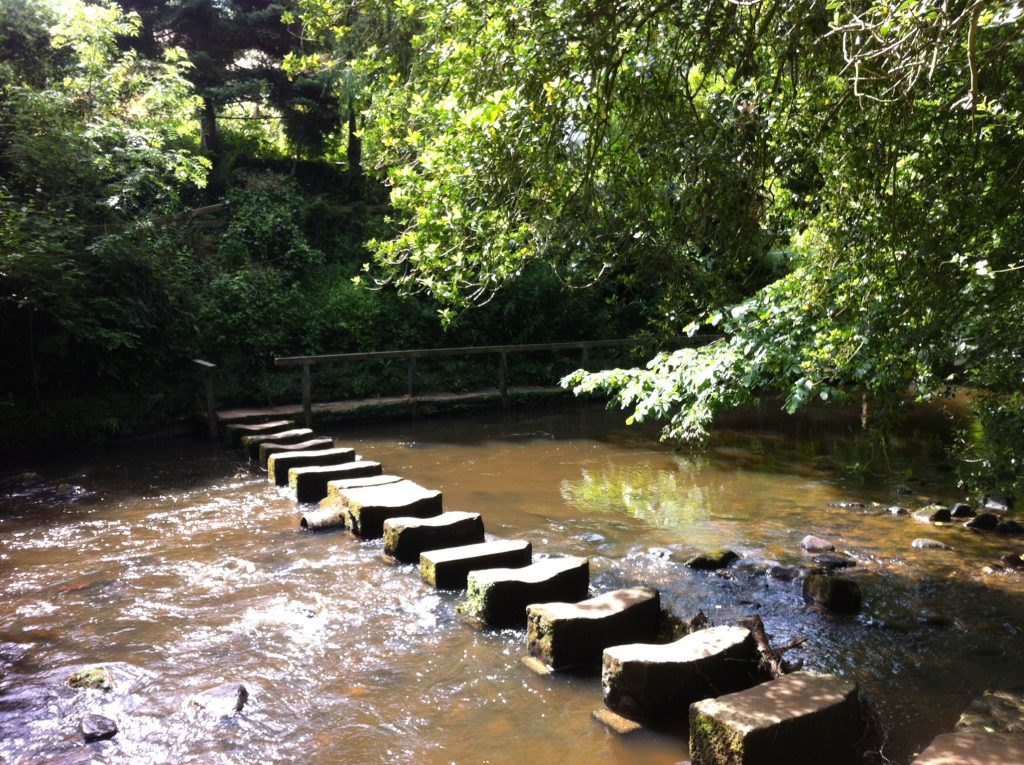
After the toe-numbing descent on the road into Lealholm, the 1 in 3 hill known as the Delves into Egton Bridge seemed easy and top marks to the landlord of the Horseshoe Hotel which sits at the bottom of the bank in Egton Bridge. Even though he wasn’t actually open for business he kindly made us a welcome pot of tea. Refreshed, we crossed the river via the two sets of stepping stones and made our way along the Egton Estates toll road towards Grosmont and the path along Eskdaleside to Sleights.
Up until we reached Sleights station we were full of praise for the thorough way-marking on the trail. So good was it, that we rarely had to check our maps; not so in Sleights where the signposts seemed to stop and we were left wandering around new housing developments in Lowdale (definitely not there when I was a lad).
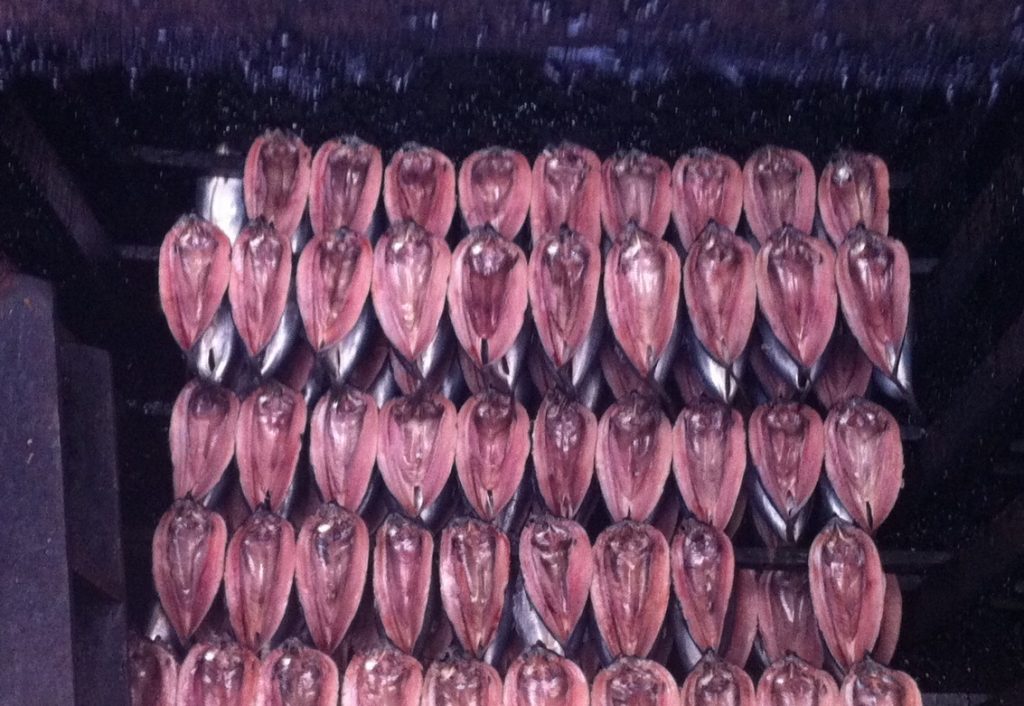
Once we picked up the route again past the cricket club and up Echo Hill we started to see Whitby Abbey in the distance. By the time we reached the village of Ruswarp the Bridge Inn was too tempting to pass without topping up our fluid levels; yet the walk was almost done, just Ruswarp Fields to cross and the walk across town to our B and B, and the following day a trip to buy Fortune’s Kippers before catching the midday train back along the Esk Valley to our cars in Castleton.
